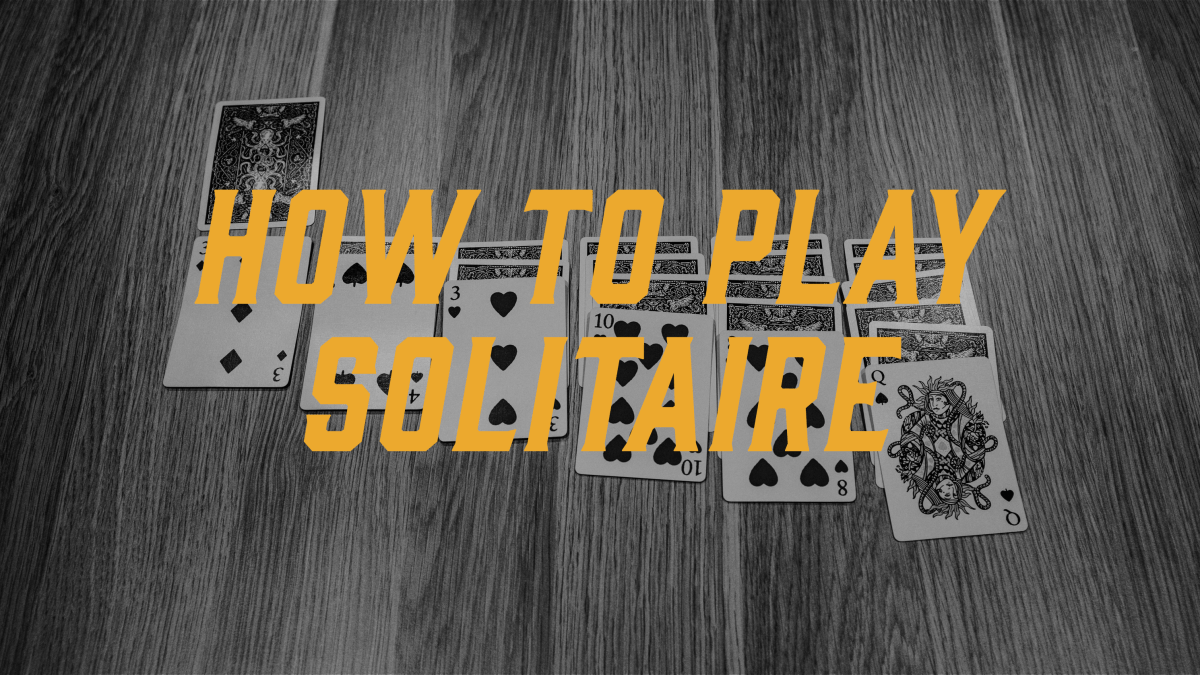How to Play Solitaire

From setting up the game to understanding the rules, we'll cover everything you need to know to get started. So the next time you have a deck of cards on you, you’ll know exactly what to do with them!
Solitaire Terms You Need to Know Before Getting Started
Before we get to the nitty-gritty of playing Solitaire, let's cover some of the terms you'll need to know to understand the game.
First up, we have the tableau, which refers to the seven piles of cards in the main playing area. These are the piles that you'll be moving cards around on to try to build up the foundation piles.
Speaking of the foundation piles, these are the four piles that you're trying to build in ascending order by suit, starting with the king and ending with the ace. So, the first card in each foundation pile will be a king, and the last card will be an ace.
You can only move cards to the foundation piles if they match the suit and are in ascending order.
Next, we have the stock, which is also known as the hand pile. This is the pile of remaining cards that you can draw from to bring additional cards into play.
And finally, we have the waste pile, which is also known as the talon. This is where you'll discard cards from the stockpile that you can't use at the moment.
Now, you’ll know exactly which pile is which when you start playing solitaire for yourself!
Setting Up a Game of Solitaire for the First Time
To get started with Solitaire, you first need to set up the tableau.
Here's how to do it:
Start from the left and place the first card face up. Then, deal one card facedown for each of the other six piles.
Move to the second pile, put a card faceup, and deal a facedown card to the remaining five piles. Keep doing this for each pile, with each successive pile having one more facedown card than the last until the seventh pile has six cards facing down and one card facing up.
So, in simple words, pile one should have one faceup card, pile two should have one facing down and one facing up, pile three should have two cards face down and one card face up, and so on.
The cards in the tableau should not be directly on top of each other, but should create a cascading column of cards.
Once you've set up the tableau, you should have a remaining pile of cards known as the stockpile. You shouldn't have any cards in the waste pile or the foundation yet.
And that's it! You're now ready to start playing Solitaire.
How to Play Solitaire
Now that you have set up the game, it's time to get down to business! The main goal of Solitaire is to move all of the cards from the tableau to the foundation. This means that you need to create a descending sequence of cards, with alternating colors.
You can move a faceup card onto another faceup card in the tableau, and if there was a facedown card on top of the card you just moved, you can flip it over and add it to the sequence.
If you have an empty spot in one of the tableau piles, you can fill it with a King (and only a King).
Don't forget about the aces! As soon as you have one, move it to the foundation pile of the corresponding suit.
Here, you can start building up your suit in ascending order. It's always a good idea to play lower cards first in the foundation pile.
If you can't move any cards from the tableau to the foundation or to another tableau pile, it's time to draw from the stockpile.
You can draw one card at a time and add it to your tableau or foundation pile if it fits the sequence. If you can't use it, add it to the waste pile.
Another tip is to stack columns by adding one sequence to another if the first faceup card matches the descending pattern. This will help you free up a facedown card that you can turn over and use.
Finally, if you have successfully moved all the cards to the foundation pile, congratulations! You have won the game. All that’s left to do now, is keep on practicing so you can become a pro at playing solitaire!







Leave a comment